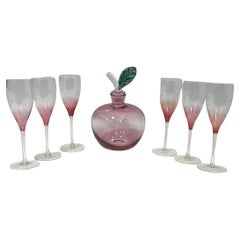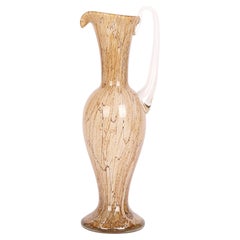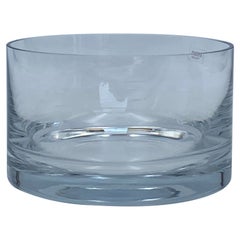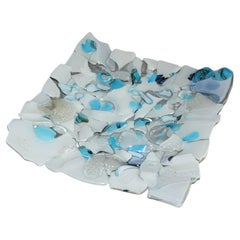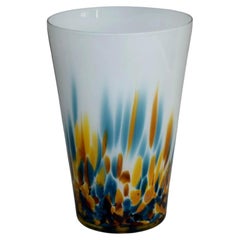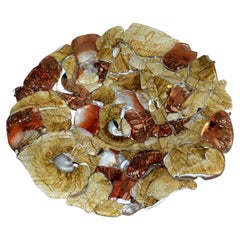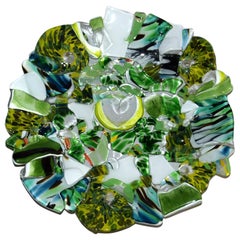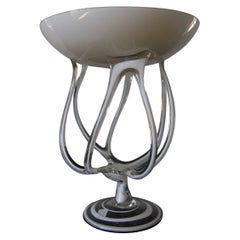Vintage Krosno Glass
Late 20th Century Polish Vintage Krosno Glass
Crystal
20th Century Polish Modern Vintage Krosno Glass
Blown Glass
1980s Polish Modern Vintage Krosno Glass
Crystal
1980s Polish Mid-Century Modern Vintage Krosno Glass
Glass, Art Glass
1980s Polish Mid-Century Modern Vintage Krosno Glass
Glass, Art Glass
1980s Polish Mid-Century Modern Vintage Krosno Glass
Glass, Art Glass
1980s Polish Mid-Century Modern Vintage Krosno Glass
Glass, Art Glass
1960s Polish Mid-Century Modern Vintage Krosno Glass
Art Glass
Late 20th Century Polish Art Nouveau Vintage Krosno Glass
Blown Glass
20th Century Polish Vintage Krosno Glass
Glass
1980s Vintage Krosno Glass
Blown Glass
1980s Vintage Krosno Glass
Blown Glass
Late 20th Century Polish Mid-Century Modern Vintage Krosno Glass
Art Glass, Blown Glass
1970s Polish Mid-Century Modern Vintage Krosno Glass
Art Glass
Late 20th Century Polish Mid-Century Modern Vintage Krosno Glass
Art Glass
Late 20th Century Polish Mid-Century Modern Vintage Krosno Glass
Art Glass, Blown Glass, Murano Glass
1970s Vintage Krosno Glass
Crystal
1990s Polish Mid-Century Modern Vintage Krosno Glass
Glass
1980s Polish Mid-Century Modern Vintage Krosno Glass
Blown Glass
1990s Vintage Krosno Glass
Art Glass
1970s Polish Mid-Century Modern Vintage Krosno Glass
Art Glass
Late 20th Century Polish Mid-Century Modern Vintage Krosno Glass
Art Glass
Late 20th Century Polish Mid-Century Modern Vintage Krosno Glass
Art Glass
Late 20th Century Polish Mid-Century Modern Vintage Krosno Glass
Art Glass
1990s Polish Modern Vintage Krosno Glass
Art Glass
Mid-20th Century Polish Bohemian Vintage Krosno Glass
Art Glass, Blown Glass
Late 20th Century Polish Vintage Krosno Glass
Crystal
1980s Polish Mid-Century Modern Vintage Krosno Glass
Glass, Art Glass
20th Century Polish Modern Vintage Krosno Glass
Blown Glass
Late 20th Century Polish Post-Modern Vintage Krosno Glass
Art Glass, Blown Glass, Murano Glass
1990s Polish Mid-Century Modern Vintage Krosno Glass
Glass
Mid-20th Century Mid-Century Modern Vintage Krosno Glass
Crystal
Vintage Krosno Glass For Sale on 1stDibs
How Much is a Vintage Krosno Glass?
A Close Look at Mid-century-modern Furniture
Organically shaped, clean-lined and elegantly simple are three terms that well describe vintage mid-century modern furniture. The style, which emerged primarily in the years following World War II, is characterized by pieces that were conceived and made in an energetic, optimistic spirit by creators who believed that good design was an essential part of good living.
ORIGINS OF MID-CENTURY MODERN FURNITURE DESIGN
- Emerged during the mid-20th century
- Informed by European modernism, Bauhaus, International style, Scandinavian modernism and Frank Lloyd Wright’s architecture
- A heyday of innovation in postwar America
- Experimentation with new ideas, new materials and new forms flourished in Scandinavia, Italy, the former Czechoslovakia and elsewhere in Europe
CHARACTERISTICS OF MID-CENTURY MODERN FURNITURE DESIGN
- Simplicity, organic forms, clean lines
- A blend of neutral and bold Pop art colors
- Use of natural and man-made materials — alluring woods such as teak, rosewood and oak; steel, fiberglass and molded plywood
- Light-filled spaces with colorful upholstery
- Glass walls and an emphasis on the outdoors
- Promotion of functionality
MID-CENTURY MODERN FURNITURE DESIGNERS TO KNOW
- Charles and Ray Eames
- Eero Saarinen
- Milo Baughman
- Florence Knoll
- Harry Bertoia
- Isamu Noguchi
- George Nelson
- Danish modernists Hans Wegner and Arne Jacobsen, whose emphasis on natural materials and craftsmanship influenced American designers and vice versa
ICONIC MID-CENTURY MODERN FURNITURE DESIGNS
- Eames lounge chair
- Nelson daybed
- Florence Knoll sofa
- Egg chair
- Womb chair
- Noguchi coffee table
- Barcelona chair
VINTAGE MID-CENTURY MODERN FURNITURE ON 1STDIBS
The mid-century modern era saw leagues of postwar American architects and designers animated by new ideas and new technology. The lean, functionalist International-style architecture of Le Corbusier and Bauhaus eminences Ludwig Mies van der Rohe and Walter Gropius had been promoted in the United States during the 1930s by Philip Johnson and others. New building techniques, such as “post-and-beam” construction, allowed the International-style schemes to be realized on a small scale in open-plan houses with long walls of glass.
Materials developed for wartime use became available for domestic goods and were incorporated into mid-century modern furniture designs. Charles and Ray Eames and Eero Saarinen, who had experimented extensively with molded plywood, eagerly embraced fiberglass for pieces such as the La Chaise and the Womb chair, respectively.
Architect, writer and designer George Nelson created with his team shades for the Bubble lamp using a new translucent polymer skin and, as design director at Herman Miller, recruited the Eameses, Alexander Girard and others for projects at the legendary Michigan furniture manufacturer.
Harry Bertoia and Isamu Noguchi devised chairs and tables built of wire mesh and wire struts. Materials were repurposed too: The Danish-born designer Jens Risom created a line of chairs using surplus parachute straps for webbed seats and backrests.
The Risom lounge chair was among the first pieces of furniture commissioned and produced by celebrated manufacturer Knoll, a chief influencer in the rise of modern design in the United States, thanks to the work of Florence Knoll, the pioneering architect and designer who made the firm a leader in its field. The seating that Knoll created for office spaces — as well as pieces designed by Florence initially for commercial clients — soon became desirable for the home.
As the demand for casual, uncluttered furnishings grew, more mid-century furniture designers caught the spirit.
Classically oriented creators such as Edward Wormley, house designer for Dunbar Inc., offered such pieces as the sinuous Listen to Me chaise; the British expatriate T.H. Robsjohn-Gibbings switched gears, creating items such as the tiered, biomorphic Mesa table. There were Young Turks such as Paul McCobb, who designed holistic groups of sleek, blond wood furniture, and Milo Baughman, who espoused a West Coast aesthetic in minimalist teak dining tables and lushly upholstered chairs and sofas with angular steel frames.
Generations turn over, and mid-century modern remains arguably the most popular style going. As the collection of vintage mid-century modern chairs, dressers, coffee tables and other furniture for the living room, dining room, bedroom and elsewhere on 1stDibs demonstrates, this period saw one of the most delightful and dramatic flowerings of creativity in design history.
Finding the Right Dining-entertaining for You
Your dining room table is a place where stories are shared and personalities shine — why not treat yourself and your guests to the finest antique and vintage glass, silver, ceramics and serveware for your meals?
Just like the people who sit around your table, your serveware has its own stories and will help you create new memories with your friends and loved ones. From ceramic pottery to glass vases, set your table with serving pieces that add even more personality, color and texture to your dining experience.
Invite serveware from around the world to join your table settings. For special occasions, dress up your plates with a striking Imari charger from 19th-century Japan or incorporate Richard Ginori’s Italian porcelain plates into your dining experience. Celebrate the English ritual of afternoon tea with a Japanese tea set and an antique Victorian kettle. No matter how big or small your dining area is, there is room for the stories of many cultures and varied histories, and there are plenty of ways to add pizzazz to your meals.
Add different textures and colors to your table with dinner plates and pitchers of ceramic and silver or a porcelain lidded tureen, a serving dish with side handles that is often used for soups. Although porcelain and ceramic are both made in a kiln, porcelain is made with more refined clay and is more durable than ceramic because it is denser. The latter is ideal for statement pieces — your tall mid-century modern ceramic vase is a guaranteed conversation starter. And while your earthenware or stoneware is maybe better suited to everyday lunches as opposed to the fine bone china you’ve reserved for a holiday meal, handcrafted studio pottery coffee mugs can still be a rich expression of your personal style.
“My motto is ‘Have fun with it,’” says author and celebrated hostess Stephanie Booth Shafran. “It’s yin and yang, high and low, Crate & Barrel with Christofle silver. I like to mix it up — sometimes in the dining room, sometimes on the kitchen banquette, sometimes in the loggia. It transports your guests and makes them feel more comfortable and relaxed.”
Introduce elegance at supper with silver, such as a platter from celebrated Massachusetts silversmith manufacturer Reed and Barton or a regal copper-finish flatware set designed by International Silver Company, another New England company that was incorporated in Meriden, Connecticut, in 1898. By then, Meriden had already earned the nickname “Silver City” for its position as a major hub of silver manufacturing.
At the bar, try a vintage wine cooler to keep bottles cool before serving or an Art Deco decanter and whiskey set for after-dinner drinks — there are many possibilities and no wrong answers for tableware, barware and serveware. Explore an expansive collection of antique and vintage glass, ceramics, silver and serveware today on 1stDibs.
- 1stDibs ExpertNovember 4, 2024To identify vintage glass, you will need to figure out if your item is between 20 and 99 years old. The easiest way to do so is first to determine the maker by looking for and then researching any markings present on the glassware. Unfortunately, vintage glass is often marked with paper and foil labels, which tend to come loose with use. As a result, experience and expertise are often necessary to accurately perform the identification process, so you may wish to have a certified appraiser or experienced antique dealer weigh in if your glassware is unmarked. Find a diverse assortment of vintage glassware on 1stDibs.
- 1stDibs ExpertAugust 8, 2024To tell if glass is vintage, first look for markings, often located on the bottom or inside of glassware. By researching the mark via online resources, you can determine the maker and learn more about your piece. Any glassware produced between 20 and 100 years ago qualifies as vintage, while older pieces are antique. In the event that you can't find any markings, a certified appraiser or knowledgeable antiques dealer can assist you. Find a wide variety of vintage glassware on 1stDibs.
- What is vintage slag glass?1 Answer1stDibs ExpertApril 5, 2022Slag glass is pressed opaque glass that has colored streaks throughout. It was used in everything from lamp shades to decorative bowls. On 1stDibs, you can find a collection of authentic slag glass pieces from some of the world’s top sellers.
- 1stDibs ExpertSeptember 9, 2024To tell if glass is vintage, first look for a marking that indicates the maker. By researching the manufacturer using trusted online resources, you can learn when it produced pieces similar to yours and get a rough idea of your glassware's age. Any glass produced between 20 and 99 years ago is vintage. If you need assistance with the dating process, seek the opinion of a certified appraiser or knowledgeable antique dealer. Explore a diverse assortment of vintage glassware on 1stDibs.
- 1stDibs ExpertAugust 20, 2024To tell if a glass vase is vintage, first research the maker. Look for markings on the inside and base, and then research them using trusted online resources to determine who produced your vase. By looking at when the maker was active and producing pieces similar to yours, you can typically roughly estimate its age. If your vase is between 20 and 99 years old, it is vintage. Vases that are 100 years old or older are antiques. For help with dating, consult a certified appraiser or knowledgeable antique dealer. On 1stDibs, find a collection of glass vases.
- Is vintage glass worth anything?1 Answer1stDibs ExpertSeptember 16, 2024Yes, some vintage glass is worth something. Collectors are often on the hunt for pieces produced by certain makers, such as Blenko, the Culver Glass Company, Dorothy Thorpe, Libbey, Georges Briard and Arcoroc. In addition to who manufactured it, the style, type, age and condition of vintage glassware all impact the potential value. For assistance with the valuation process for pieces in your collection, enlist the help of a certified appraiser or knowledgeable antique dealer. On 1stDibs, find a diverse assortment of vintage glassware.
- 1stDibs ExpertOctober 24, 2024To tell if your vintage glasses are gold, look on the nose bridge and the temples for a purity mark. Makers often stamped their solid gold pieces with “12K,” “10K,” “14K” and other markings to identify their gold eyewear. You can research all of these markings using trusted online resources. Should you locate a "GF" mark, it is likely that your glasses are gold-filled rather than solid gold. This means that the frames are predominantly a less expensive metal but do have a thin layer of genuine gold alloy as a finish. Another mark that indicates your glasses contain some gold is "RGF." The mark stands for “rolled gold filled.” Glasses bearing this mark feature a gold-plated finish that is thinner than what's found on traditional gold-filled frames. For assistance identifying your eyeglass frame material, consult a certified appraiser or experienced antique dealer. Explore a selection of vintage glasses on 1stDibs.
- 1stDibs ExpertAugust 29, 2024To tell if Murano glass is vintage, it's usually necessary to conduct some online research using trusted sources. Start by looking for a maker's mark and then cross-referencing it with images published online to determine who made your piece. By learning more about the manufacturer and what they produced over the years by reading histories and exploring product catalogues, you can estimate the rough age of your piece. For Murano glass to be considered vintage, it must be between 20 and 99 years old. Older pieces are classified as antique. If you need assistance with dating your glassware, seek the help of a certified appraiser or knowledgeable antique dealer. Explore a range of Murano glass on 1stDibs.
- 1stDibs ExpertNovember 2, 2023To tell if vintage Cartier glasses are real, first look for the brand's logo on the outside of the arms. It should be spelled correctly and in the French luxury fashion house's iconic gold-toned italic font. Because some vintage pieces may lack serial numbers and other markings used to identify contemporary eyewear, you may wish to enlist the help of a licensed appraiser or knowledgeable dealer for assistance with authentication. Explore a selection of Cartier glasses on 1stDibs.
- 1stDibs ExpertApril 5, 2022The easiest way to tell if a bead is glass or plastic is to feel it. Glass beads will be cooler to the touch, whereas plastic beads will be closer to room temperature and warm up quickly in your hands. Another test you can perform is to listen to the sound. Glass has a distinctive ring since it’s harder whereas plastic is softer and has a duller sound. Shop a range of vintage glass bead pieces on 1stDibs.
Read More
How Noguchi Elevated Ashtrays to Objets d’Art
Smoking might have fallen out of fashion, but these ashtrays have enduring design appeal.
Tapio Wirkkala Bucked the Trends of Mid-Century Nordic Design
The Finnish talent created nature-inspired pieces, from furniture to jewelry, with phenomenal staying power.
